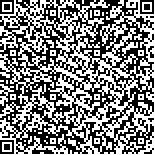| 摘要: |
| [摘要] 目的 观察社区一体化综合干预措施对2型糖尿病患者的防治效果。方法 采用多阶段分层抽样的方法,随机抽取2012-01~2013-12在广州市华南农业大学社区建立居民健康档案时诊断为2型糖尿病且接受规范治疗患者798例进行一体化的综合干预。比较实施干预措施前后,相关代谢指标、遵医嘱行为和生活行为方式的转变情况。结果 干预后的糖化血红蛋白(HbA1c)、总胆固醇(TC)、甘油三酯(TG)均较干预前低,差异有统计学意义(P<0.05)。干预后的糖尿病治疗率为99.00%,高于干预前的77.82%(χ2=174.625,P=0.001),服药依从性自干预前的60.90%提高到干预后的91.60%(χ2=207.699,P=0.001),定期测血糖率从47.12%上升到87.59%(χ2=297.298,P=0.001),糖尿病知晓率从干预前的19.55%提高到干预后的87.97%(χ2=751.406,P=0.001)。干预后的限盐率为90.47%,高于干预前的48.75%(χ2=328.447,P=0.000)。控油率为96.12%,高于干预前的48.25%(χ2=455.328,P=0.001)。结论 由社区医院积极推动的社区糖尿病专业管理模式可有效降低糖尿病社区居民的相关代谢指标,对转变其饮食习惯和生活方式有积极作用。 |
| 关键词: 2型糖尿病 社区 干预措施 |
| DOI:10.3969/j.issn.1674-3806.2019.07.21 |
| 分类号:R 58 |
| 基金项目: |
|
| Effect of integrated comprehensive interventions on type 2 diabetes mellitus in community residents |
|
ZHOU Ying, FAN Sui-guang, CHEN Xiao-cong
|
|
Department of Internal Medicine, the Hospital of South China Agricultural University, Guangzhou City, Guangdong 510642, China
|
| Abstract: |
| [Abstract] Objective To study the effect of integrated comprehensive interventions on type 2 diabetes mellitus(T2DM) in community residents. Methods Seven hundred and ninety-eight residents in the community of South China Agricultural University were randomly recruited for the study by the multi-phase- stratified -cluster sampling method. All the patients were diagnosed with T2DM and received routine treatment for T2DM. The changes of related metabolic indexes, medication compliant behaviors and behavior patterns of living were compared before and after interventions. Results After interventions, the levels of glycosylated hemoglobin(HbA1c), total cholesterol(TC) and triglyceride(TG) were significantly lower than those before interventions(P<0.05). After interventions, the treatment rate(99.00% vs 77.82%, χ2=174.625, P=0.001), the clinical compliance rate(91.60% vs 60.90%, χ2=207.699, P=0.001), the rate of blood glucose test rises from 47.12% to 87.59%(χ2=297.298,P=0.001), the rate of diabetes recognition (87.97% vs 19.55%, χ2=751.406, P=0.001), the salt limited intake rate(90.47% vs 48.75%, χ2=328.447, P=0.000) and the oil limited intake rate(96.12% vs 48.25%, χ2=455.328, P=0.001) were significantly higher than those before interventions. Conclusion The intervention measures given by the community hospital are significantly effective for type 2 diabetes mellitus in the community residents. |
| Key words: Type 2 diabetes mellitus Community Intervention measures |

